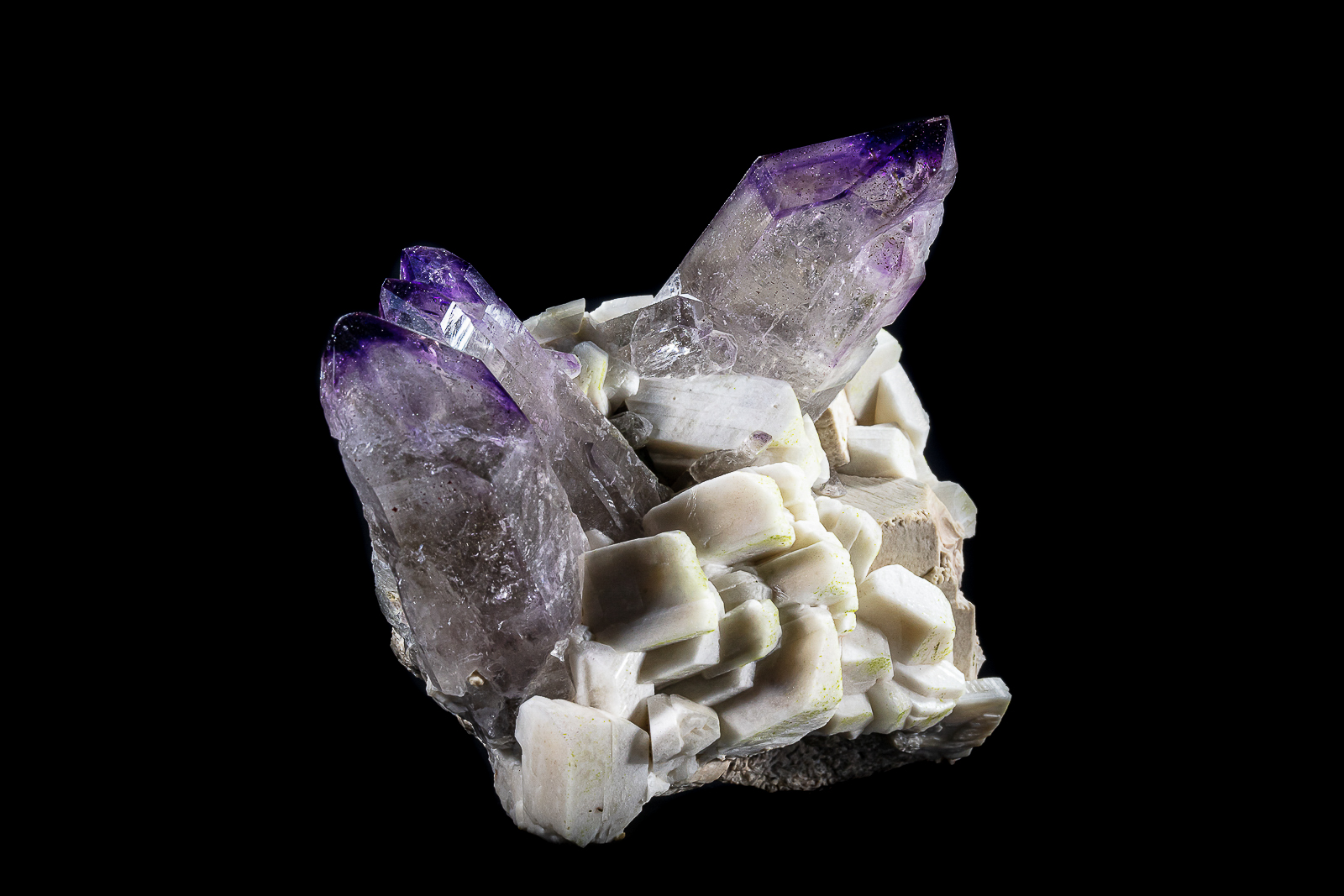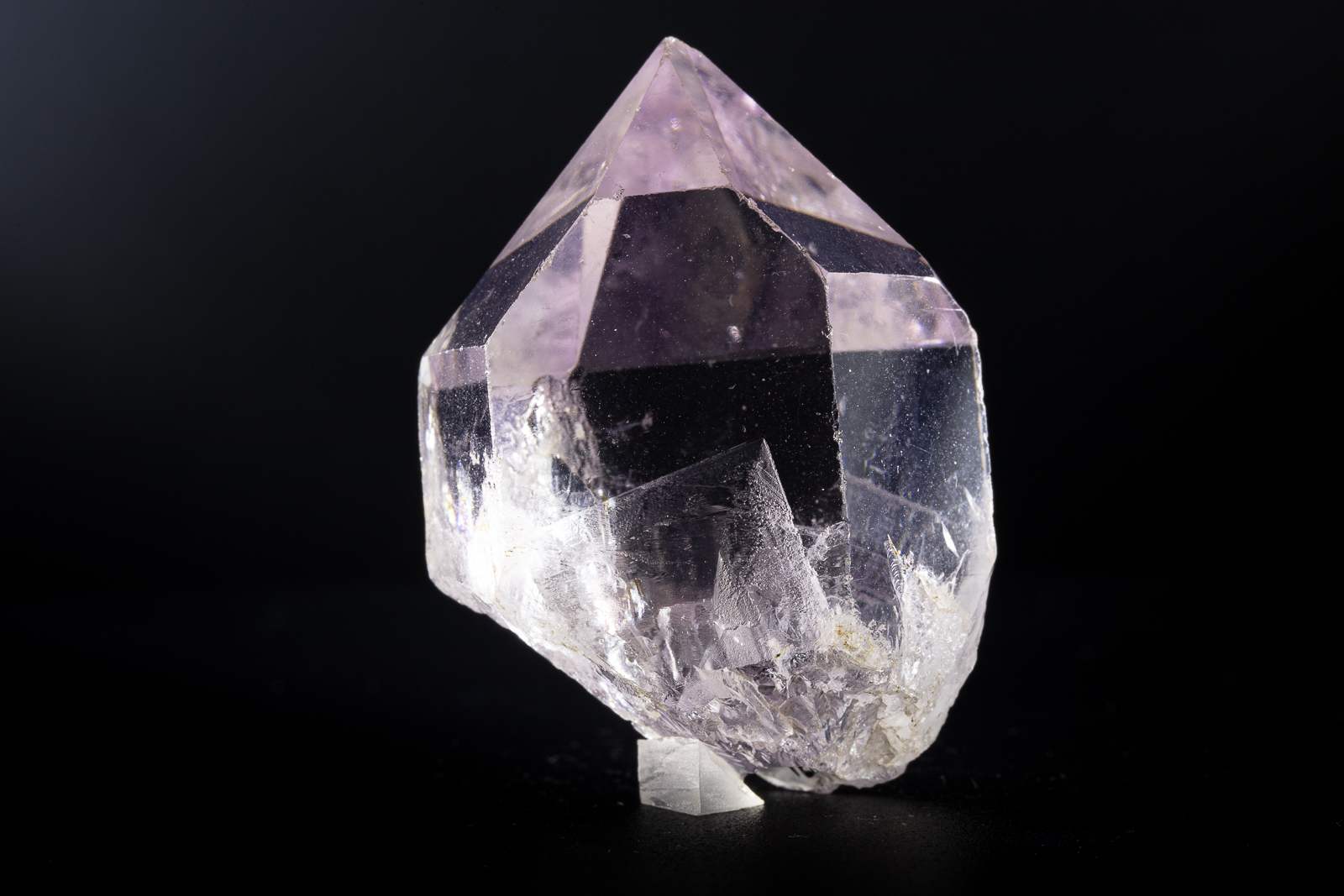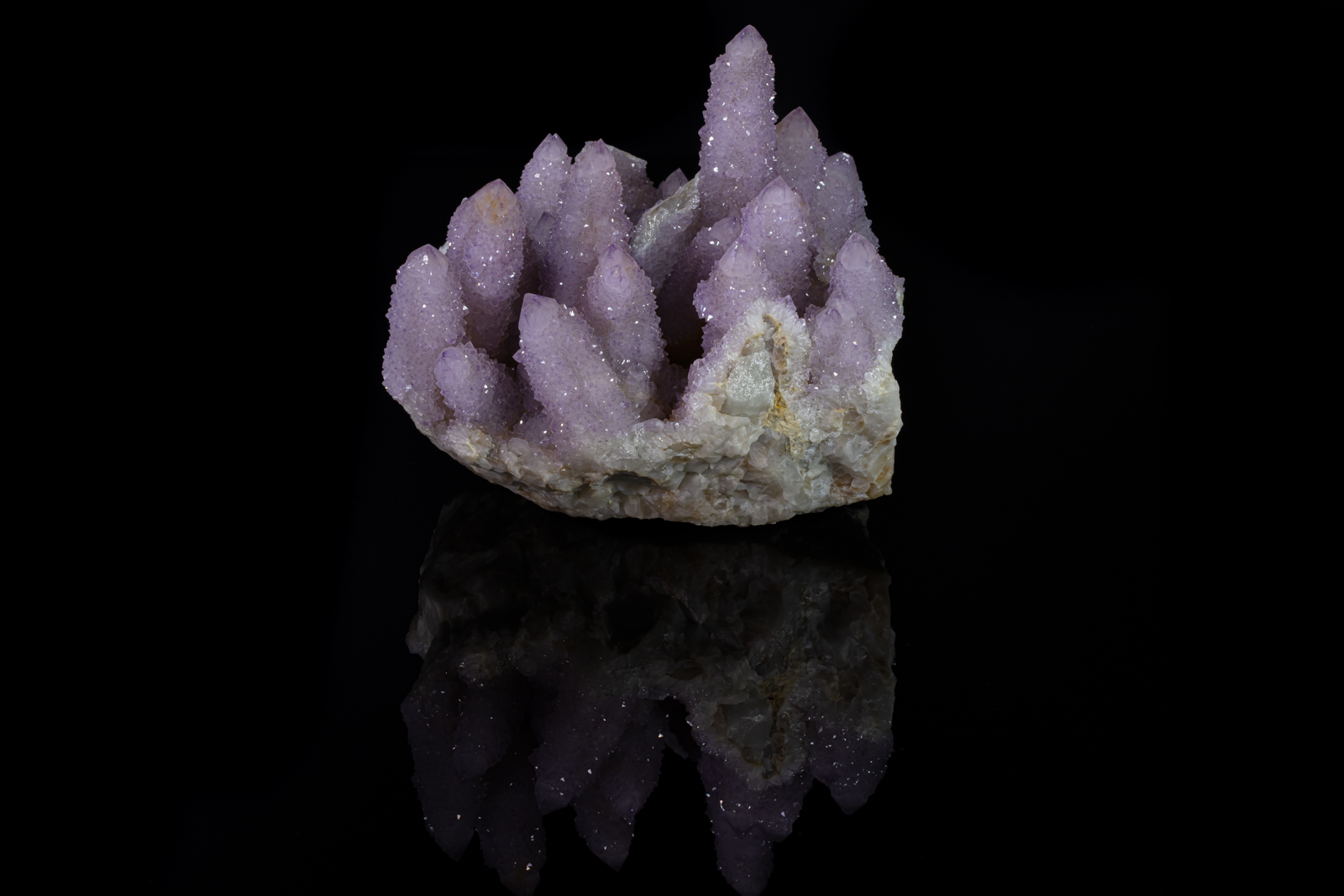Amethyst
Formula: SiO2
Species: Silicates – (Tectosilicates)
Name: From Greek “a-methystos”, meaning not drunk.
A violet to purple variety of quartz that owes its color to gamma irradiation and the presence of traces of iron built into its crystal lattice. The irradiation causes the iron Fe(+3) atoms that replace Si in the lattice to lose an electron and form a [FeO4]0 color center.
The color in amethyst from most localities is unevenly distributed in the individual crystals. In amethyst geodes, it is often most intense in the growth zones under the rhombohedral faces (at the tips). Occasionally the color is deeper under either the r or z rhombohedral faces, giving the crystal a pinwheel appearance when viewed from the top. In prismatic crystals, the color may appear in phantom-like thin layers, while in scepters and skeleton quartz the color is often concentrated along the edges, and accompanied by smoky zones. Despite the intense color, the content of iron occupying Si positions in amethyst is rather low, in the 10-100 ppm.
When heated to more than about 300-400°C, amethyst loses its violet color and often turns yellow, orange or brown, and then resembles the quartz variety citrine, but depending on the locality and the temperature during the heat treatment it may also turn colorless or – rarely -.
Irradiation with UV light will also destroy the color centers, and accordingly prolonged exposure to sunlight will slowly fade amethyst.
Amethyst is pleochroic: when the polarization of the light is changed from parallel to the c-axis to perpendicular to the c-axis, amethyst changes its color from blue-violet to purple. The strength of the effect varies to a considerable degree, and changes in the hue depending on the direction of the transmitted light may be observable with the naked eye, in particular in crystals with a zonar development of color, which may even show sky-blue tones.
Amethyst crystals do not get very large, crystals longer than 30cm are very rare.
It is found in various forms and shapes, the most common growth forms are:
1. Druzy crystal aggregates which outline cavities; the crystals are usually short-prismatic and often lack prism faces. Most common in volcanic rocks, but also in hydrothermal veins, and even in cavities in sedimentary rocks;
2. Scepters (late syntaxial overgrowth) on other color varieties of quartz, in particular in high- to medium-temperature environments like alpine-type fissures and pegmatites;
3. Split-growth crystals (“artichoke quartz”) in hydrothermal veins in ore deposits, but also in volcanic rocks.
4. As individual well-formed crystals in small cavities and fissures, in particular in volcanic rocks.
5. As hydrothermal vein filling, often with several growth phases with variable color that cause a banding pattern.
Despite the large number of different shapes amethyst shows, certain types of quartz have never been found as amethyst: Macromosaic quartz, frequently found as smoky quartz or citrine, apparently never forms amethyst. Amethyst gwindels are unknown (only gwindels with amethyst overgrowth have been found). Amethyst does also not seem to form needle-like crystals.
In general, only the common crystallographic forms of quartz, the hexagonal prism and the positive and negative rhombohedra are found on amethyst crystals. Druzy amethyst may lack prism faces. Crystals with additional faces like the trigonal bipyramid s are known only from very few localities.
Colour: Violet – purple
Lustre: Vitreous
Hardness: 7.0
Density: 2.65
Crystal System: Trapezohedral
Member of: Tectosilicates

 Copyright Charles Camarda - www.camardavisualstudio.com
Copyright Charles Camarda - www.camardavisualstudio.com Copyright Charles Camarda - www.camardavisualstudio.com
Copyright Charles Camarda - www.camardavisualstudio.com Copyright Charles Camarda - www.camardavisualstudio.com
Copyright Charles Camarda - www.camardavisualstudio.com Copyright Charles Camarda - www.camardavisualstudio.com
Copyright Charles Camarda - www.camardavisualstudio.com